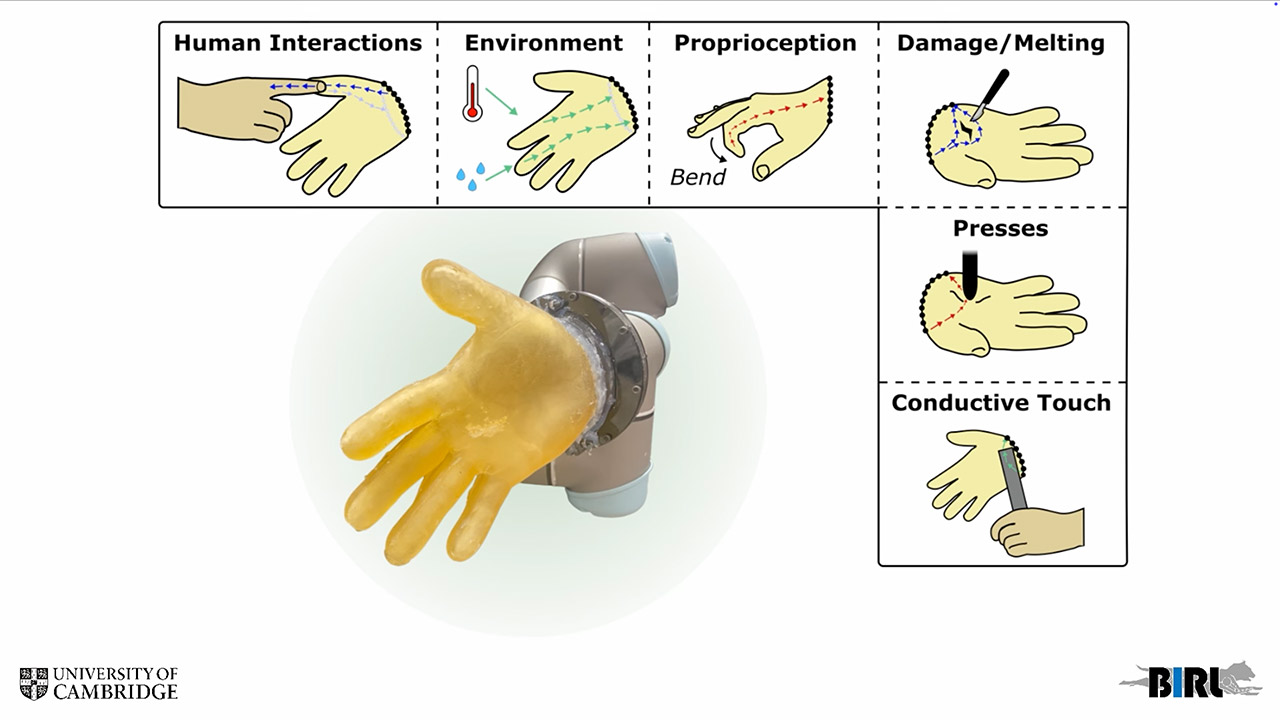
Tesla’s Optimus, and other humanoid robots, may soon be able to feel, literally. How so? A newly developed robotic skin capable of mimicking human touch. This marks a sensory leap forward, as in a single-material marvel that detects pressure, shear, and temperature in one seamless package.
This skin is crafted from a flexible, conductive hydrogel, and slips over a robotic hand like a glove. Unlike previous multi-layered or wired designs, this one uses electrical impedance tomography to sense stimuli across its entire surface. “It’s a low-cost, durable material that can take any shape and detect various types of touch,” says George Malliaras, a lead researcher from Cambridge’s Department of Engineering. The hydrogel’s simplicity is its strength: no complex wiring, no per-taxel calibration, just a continuous sensory array that feels taps, strokes, and even temperature shifts.
- With this set, based on the legendary Transformers Autobot, adults build LEGO Optimus Prime figure that converts from robot to truck and back
- Relive the Transformers saga with accessories, including the ion blaster, Autobot Matrix of Leadership, an Energon axe, Energon cube and jetpack
- This unique collectible robot model makes a great home décor piece - top off the build with a unique display plaque with Optimus Prime facts

Even the most advanced robots today are often blind to the nuances of touch. This new skin changes that. By integrating pressure, shear, and thermal detection, it allows robots to interact with the world in a more human-like way. “Our goal was to create a skin that’s robust and cost-effective, yet capable of complex sensing,” Malliaras explains.

Electrical impedance tomography, typically used to monitor lung function in medical settings, tracks changes in the hydrogel’s electrical properties as it’s touched or heated. Pressing down on the material causes it to compresses, giving the material the ability to conduct electricity. Those shifts are tracked live, painting an ever-changing sensory map for the robot.
To put the hydrogel-coated robotic hand through its paces, researchers conducted all sorts of durability tests. The skin stood strong, keeping its sensory smarts intact no matter the punishment. “We wanted a material that could withstand real-world conditions while still delivering reliable data,” says co-researcher Thomas George-Thuruthel.
Traditional robotic skins rely on intricate sensor arrays, driving up production expenses. This hydrogel, however, is relatively cheap to produce and doesn’t require complex assembly. “We’ve designed something that’s scalable and adaptable to different robotic platforms,” Malliaras notes.
The Cambridge team sees applications beyond homes—think prosthetics that give wearers a richer sense of touch or industrial robots that handle delicate materials with precision. “This skin allows robots to interact with the physical world in a more meaningful way,” George-Thuruthel says.
[Source]










